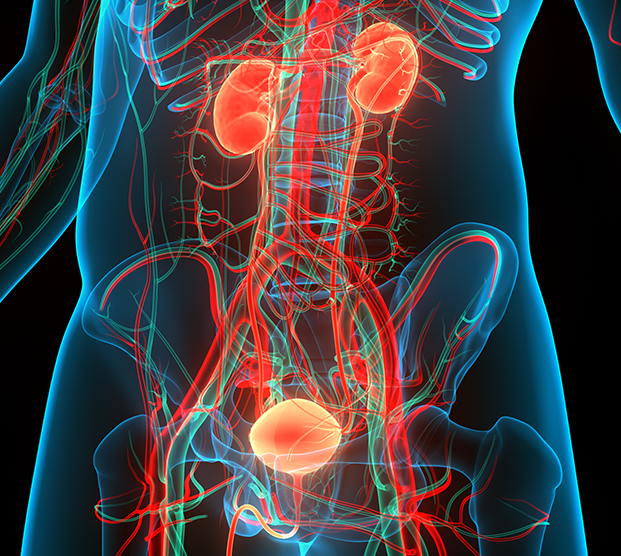


The Four Types of Prostatitis
Patients may be diagnosed with one of the following types of prostatitis:
- Acute bacterial prostatitis. A bacterial infection of the prostate usually with sudden, severe symptoms.
- Chronic bacterial prostatitis. An ongoing or recurring bacterial infection with mild to moderate symptoms.
- Chronic prostatitis/chronic pelvic pain syndrome. Ongoing or recurring pelvic pain and urinary tract symptoms with no sign of an infection.
- Asymptomatic inflammatory prostatitis. The patient experiences signs of an inflamed prostate but doesn’t have any symptoms.
Symptoms of Prostatitis




Patients with prostatitis may experience the following symptoms:
- Cloudy urine
- Blood in the urine
- Urgent need to urinate
- Frequent urination, particularly at night (nocturia)
- Pain or burning sensation when urinating (dysuria)
- Difficulty urinating, such as dribbling or hesitant urination
- Painful ejaculation
- Pain in the abdomen, groin, or lower back
- Pain or discomfort of the penis or testicles
- Pain in the area between the scrotum and rectum (perineum)
- Fever, chills, muscle aches, and other flu-like symptoms (with acute bacterial prostatitis)
Causes of Prostatitis
The cause of prostatitis will depend on the type.
Acute bacterial prostatitis is often caused by strains of bacteria that cause an infection that spreads from other parts of the urinary or reproductive systems.
Chronic bacterial prostatitis is also caused by bacteria but occurs when treatment for an acute infection fails to kill the bacteria.
The cause of chronic prostatitis, or chronic pelvic pain syndrome, is not well understood. Multiple factors may be involved, including nervous system dysfunction, previous infection, immune system dysfunction, irregular hormone activity, and psychological stress.
Asymptomatic inflammatory prostatitis doesn’t have a known cause and is typically found during an exam for other conditions. This type of prostatitis isn’t treated.
Prostatitis Risk Factors
The following factors increase the risk of developing prostatitis:
- Young or middle-aged adulthood
- Infection of the urinary or reproductive system
- HIV infection or AIDS
- Previous prostatitis
- Urinary catheter inserted into the urethra to drain the bladder
- Diagnostic sampling of prostate tissue (biopsy)
Diagnosing Prostatitis
Patients experiencing symptoms of prostatitis may need to see a urologist for a physical exam. The urologist will review the patient’s symptoms and medical history, and order diagnostic tests to identify the cause of their symptoms. These tests may include a digital rectal exam, urine test, blood test, and prostatic specimen test. Urodynamic tests and imaging may also be done if the initial tests don’t show signs of an infection.
Treatment Options
Patients diagnosed with acute or chronic bacterial prostatitis may be treated with antibiotics for four to six weeks. Medications can also be prescribed to help relax the bladder neck and the muscle fibers where the prostate joins the bladder. The urologist may also recommend pain medication like acetaminophen or ibuprofen

